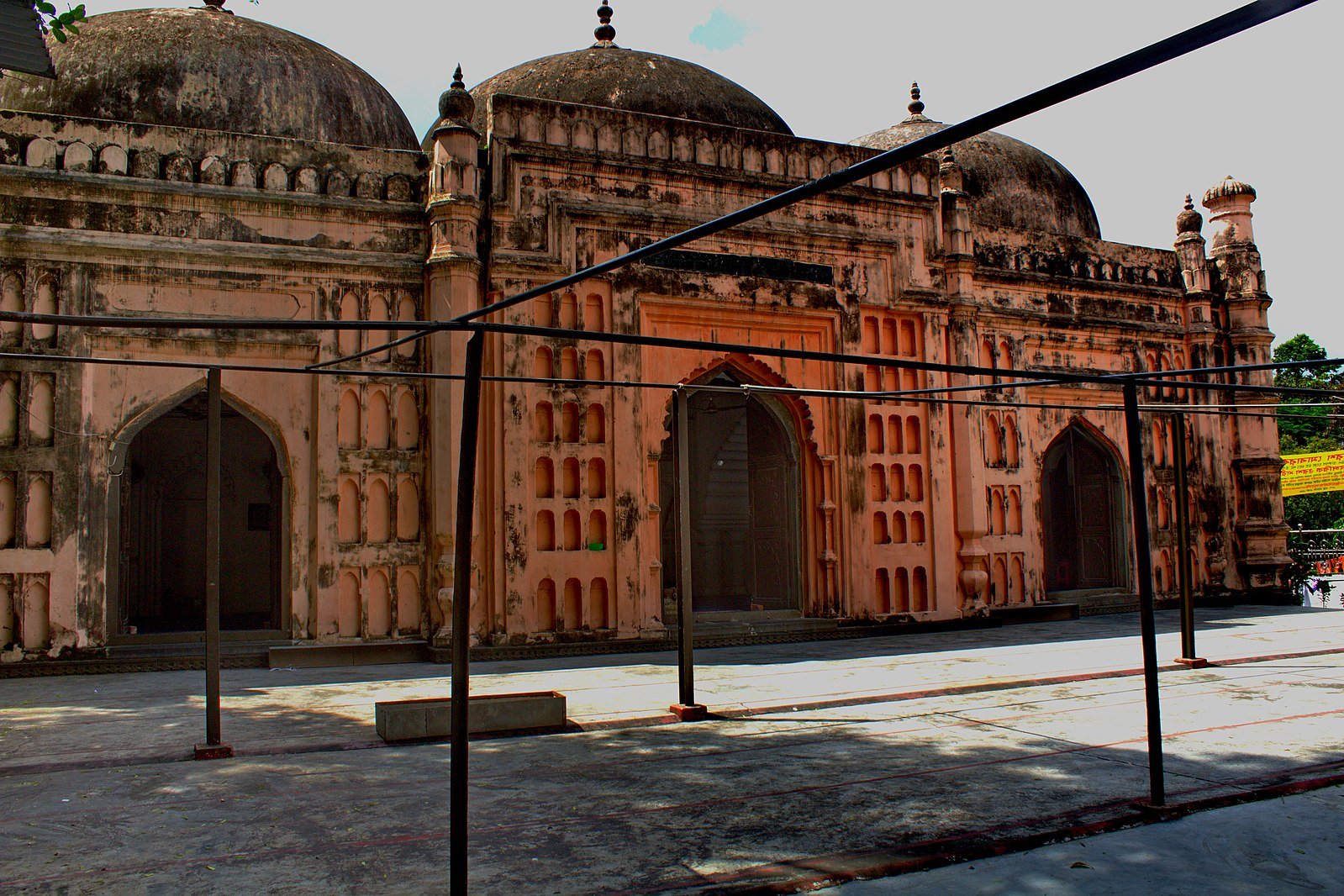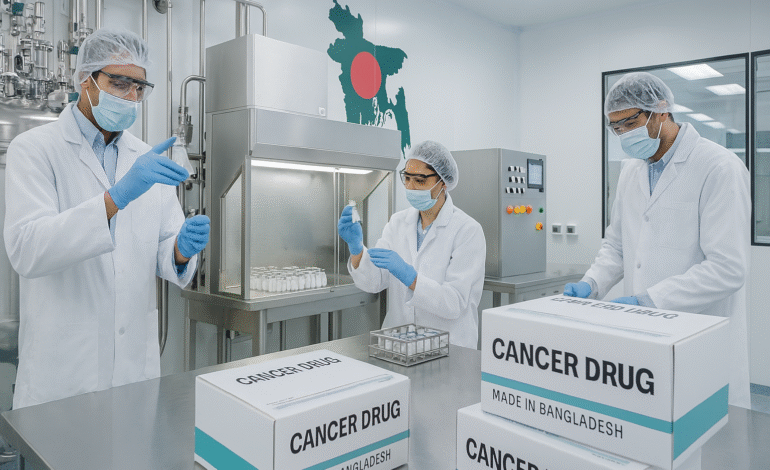Bangladesh Makes Cancer Drugs Affordable: A Breakthrough in Access
In recent years, a quiet but transformational shift has taken place in Bangladesh’s healthcare landscape. What was once a scenario where many patients simply could not afford lifesaving medications is now changing thanks to the expansion of local production of cancer drugs in Bangladesh. With prices plummeting from tens of thousands of taka to mere thousands, Bangladesh is emerging as a model for cost-effective oncology drug manufacturing and access.
From Import Dependence to Local Production
Fifteen years ago, Bangladesh relied almost entirely on imported oncology medications, spending over Tk 1,000 crore annually and forcing many patients to forgo treatment or seek it abroad.
Today, domestic manufacturers meet about 95% of the nation’s demand for cancer drugs in Bangladesh. Major pharma players like Beacon Pharmaceuticals, Incepta Pharmaceuticals and Renata Pharmaceuticals are producing over 100 oncology molecules and exporting them to countries including Sri Lanka, Nepal and Myanmar.
This shift has not only improved domestic access, but also reduced foreign currency outflows and strengthened Bangladesh’s role in regional medicine supply chains.
Dramatic Price Reductions of Cancer Therapies
The impact for patients has been significant. According to industry figures:
- A lung-cancer drug, erlotinib (brand-name Erlonix), once imported at about Tk 7,500 per unit, now costs around Tk 750 in domestic production.
- Pegfilgrastim, a critical supportive-care medicine in chemotherapy, dropped from about Tk 40,000 to between Tk 4,000–20,000 depending on the manufacturer.
- Filgrastim fell from about Tk 60,000 to as low as Tk 4,000 after local API (active pharmaceutical ingredient) development.
These numbers illustrate how the production of cancer drugs in Bangladesh has turned an affordability crisis into a more accessible reality for many patients.
Government Policies: The Enabling Environment
Key to this transformation has been supportive state policy. The National Board of Revenue (NBR) exempted VAT on cancer-drug production, waived import duties on raw materials and reduced withholding tax on imports from 5% to 2%.
These measures cut production costs, allowing manufacturers to pass savings to patients. The government has signalled that stronger backing for biosimilars and API manufacturing will be the next frontier.
Manufacturing Capacity and Quality Assurance
Local companies now have sophisticated facilities and are designing biosimilars, monoclonal antibodies and targeted therapies previously only available through import. For example, Beacon reports more than 100 oncology molecules in its portfolio.
To ensure quality, several firms have established direct cold-chain delivery to hospitals and pharmacies, bypassing retail intermediaries to reduce counterfeit risk.
Nonetheless, oncologists emphasise that more clinical trials and stricter quality monitoring are still needed to match global benchmarks.
Regional Export Ambitions and Global Significance
With domestic demand largely covered, Bangladeshi companies are scaling exports of cancer drugs in Bangladesh and abroad. This is important for global health equity and supply-chain diversification.
For low- and middle-income countries, Bangladesh offers a replicable model: developing robust generic oncology production, leveraging open patent space (as an LDC) and aligning policy to reduce costs.
Globally, where cancer remains among the leading causes of death, approaches that reduce medicine costs while maintaining quality are central to achieving the UN’s Sustainable Development Goal 3 on health and well-being.
Challenges Ahead: Patents, APIs and Sustainability
While the progress is impressive, several challenges remain for the cancer-drugs-in-Bangladesh story:
- Bangladesh is scheduled to graduate from LDC status, which may remove generic patent flexibilities under the WTO’s TRIPS framework and raise costs.
- Local API production is still relatively limited, leaving some cost pressure due to imported active ingredients.
- More clinical trials and rigorous safety monitoring are required to build trust in locally manufactured oncology drugs.
- Rising cancer incidence (about 167,000 new cases annually) means demand will grow, putting further pressure on affordability and supply.
Addressing these issues will be important for Bangladesh to maintain its cost advantage and export potential in cancer drugs.
The Patient’s Perspective: Access and Affordability
For many cancer patients in Bangladesh who previously faced prohibitive costs or had to travel abroad for treatment, local production means life-changing access. The dramatic price drops for medicines such as erlotinib and filgrastim translate into better adherence, earlier treatment and improved survival chances.
Clinicians note improved availability of generics with good results but stress that sustained policy support and quality assurance are key to maintaining trust.
By making cancer drugs in Bangladesh more affordable, the industry is alleviating one major barrier to treatment: the cost of medicines. That contributes to more equitable health outcomes across socioeconomic groups.
A Turning Point in Cancer Care
The story of cancer drugs in Bangladesh is a powerful illustration of how local industry, government policy and patient need can converge to produce affordable healthcare. Rather than being doomed by high costs and import dependence, Bangladesh’s pharmaceutical sector has leap-frogged into self-reliance and regional exportation.
With manufacturing covering 95% of national demand, prices that have plunged by up to 90%, and exports underway, Bangladesh is showing that generic oncology access can be both high quality and low cost.
The next phase will test how well Bangladesh can sustain this momentum—by building API capacity, defending market access in the post-LDC era, and maintaining global quality standards. If successful, the model of cancer drugs in Bangladesh could serve as a blueprint for other developing economies aiming for affordable oncology care.








